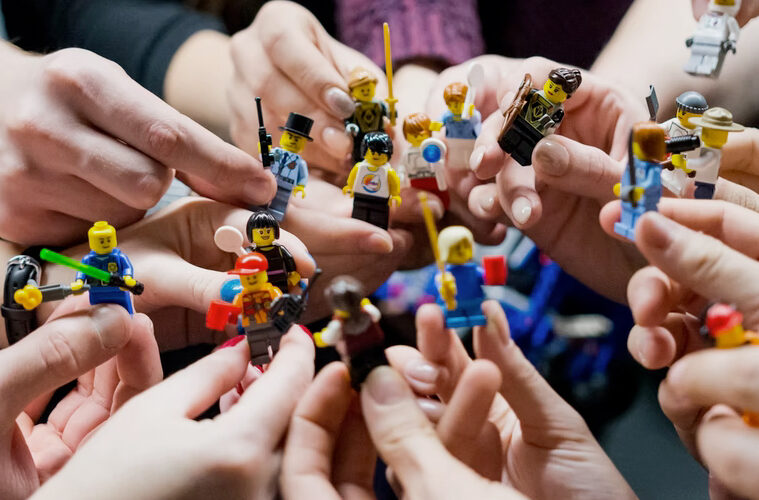My parents moved to Scarborough, a suburb of Toronto, Canada from Kolkata, India. My brother hadn’t been born and we didn’t have any family in Canada, so I was brought up mostly alone.
Walking into Junior Kindergarten midway through the year I still remember the anxiety that washed over me. There were kids everywhere! I saw some giant blocks in the corner of the room, far away from the others, and beelined for them. I started putting the blocks together. A kid in the classroom took notice and asked me what I was doing. I told him I’m making a spaceship! As we began building the spaceship together, more and more kids joined until the entire class was doing it together. Our teacher, Ms. Daineault, took a photo. That photo hung on the wall of my school for years. At that moment, two neurons seared together in my brain and I was hooked. From then on you could always find me organizing group activities. It didn’t matter if it was a game of capture the flag or organizing hangouts with friends, I just loved bringing people together.
It was natural to take that love of collaboration and build a career from it. I became a Producer and an Entrepreneur. Whether it’s reminiscing about those days on the playground, organizing a dinner for the family, producing a film, building an affordable home with Habitat for Humanity, or developing my business, I see the same patterns in the way I work with my projects and team.
Along with communication, collaboration is one of the most important skills we need in order to produce great work. So many of the issues we have with other people usually come down to a lack of communication, understanding, or an inability to work together.
Here are the most effective ways to think about collaboration:
Agree on the Mission
From the onset, decide what it is that you’re building. If it’s not clear whether you’re building a spaceship or a sandcastle, you’re going to have a hard time getting to the finished product. Architects use blueprints, Producers use scripts. Find your mission plan and make sure everyone is on board. Even “divide and conquer” goes infinitely smoother when there’s a clear understanding of what the output will be.
Do It Together
Watch a group of kids try to accomplish something together – they are so good at active participation and encouraging everyone to do it together. Bystanders are quickly brought into the middle of the activity. Why is this important? You want everyone to feel invested – and you only get invested by doing it. I’ve had clients on set holding a light, and all of a sudden they’re jazzed to be part of the entire process – even the small, nitty-gritty details. They are less likely to criticize and more likely to contribute when they’re working together with the group.
Lead by Supporting
No one likes the kid on the playground who barks orders and points out the flaws. Being a leader means going first. It requires that you don’t stay on the sidelines. You’ll enjoy the process more, and you’ll get far more out of it. Your team will respect you for it. Use your position of authority to remove barriers to collaboration and creativity. Not everyone will participate the way you want, but if you trust people with autonomy and space they’ll find their own way to contribute and they’ll have the opportunity to surprise you. You’ll likely get better results – but above all, they’ll care more about the outcome.
Get Creative by Having Fun
I’m sure there are a million other things you’d rather be doing than another presentation deck. I bet you’re not alone in that feeling. If you can bring some passion, fun and energy to the task at hand you’ll be quietly encouraging others to do the same. I’m a firm believer that where there’s fun, there’s creativity. When you get creative, the output gets infinitely better.
If you take nothing else, the next time you find yourself collaborating with a group of people – imagine them all like kids in a playground. That passion and effortless move to be collaborative is exactly how we should be approaching projects.
When you get to the end of making that thing you’re all working on together, there’s a beautiful sense of communal accomplishment that can only be found when you make something together like a group of kids building a spaceship or a C-Suite team that just brought their product to market.

ABOUT SUMIT:
Sumit Ajwani is the founder of Makers, an interdisciplinary company that helps create film, activations, physical installations, and events. With a presence in Toronto, Los Angeles and New York City, Makers serves global brands, advertising agencies, and organizations focused on social causes. A filmmaker and executive producer by training, Sumit is working to diversify the people and producers who create story-driven content.


